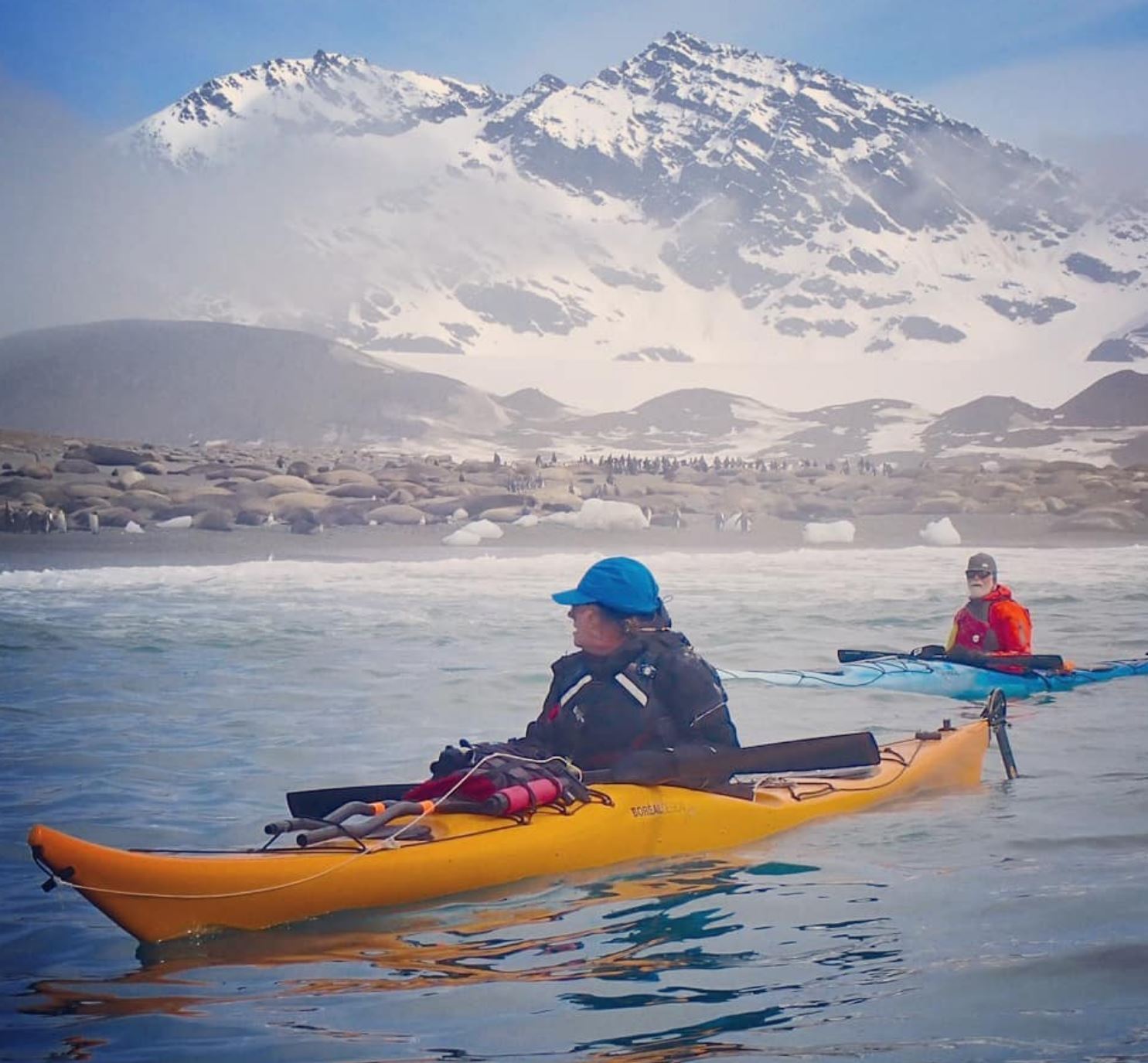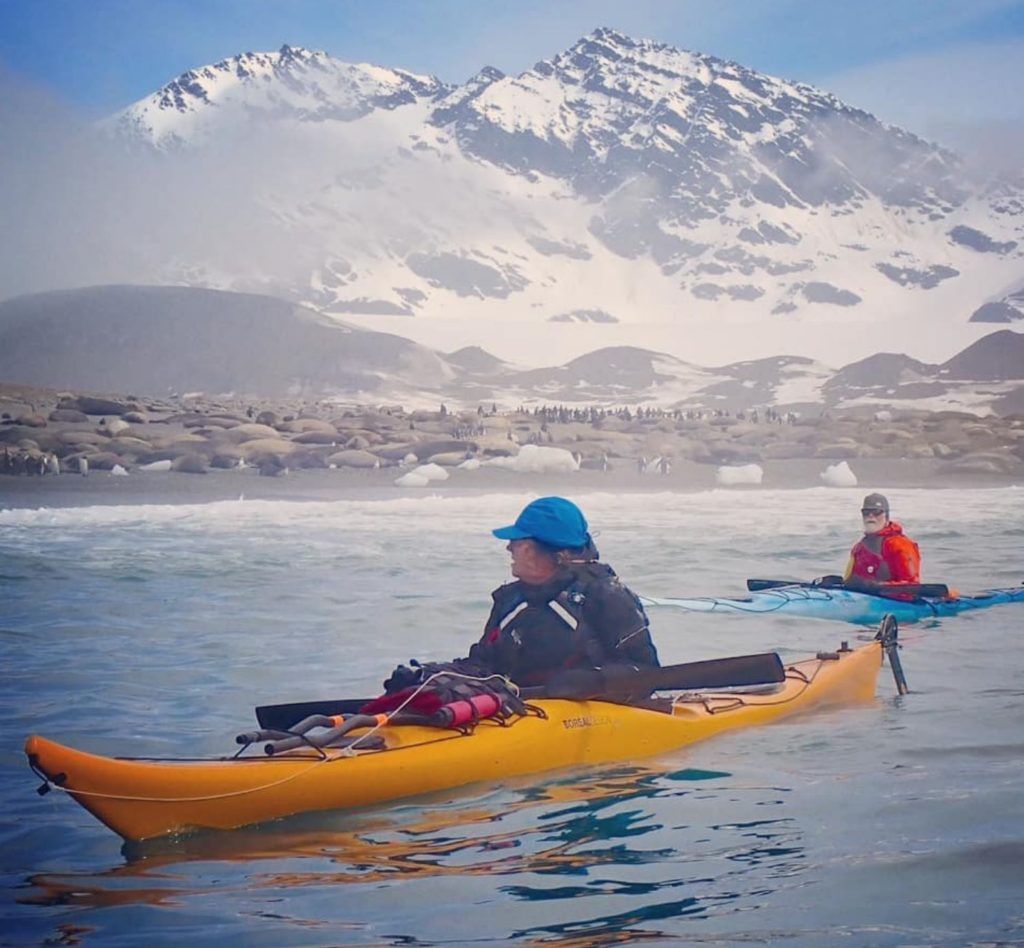
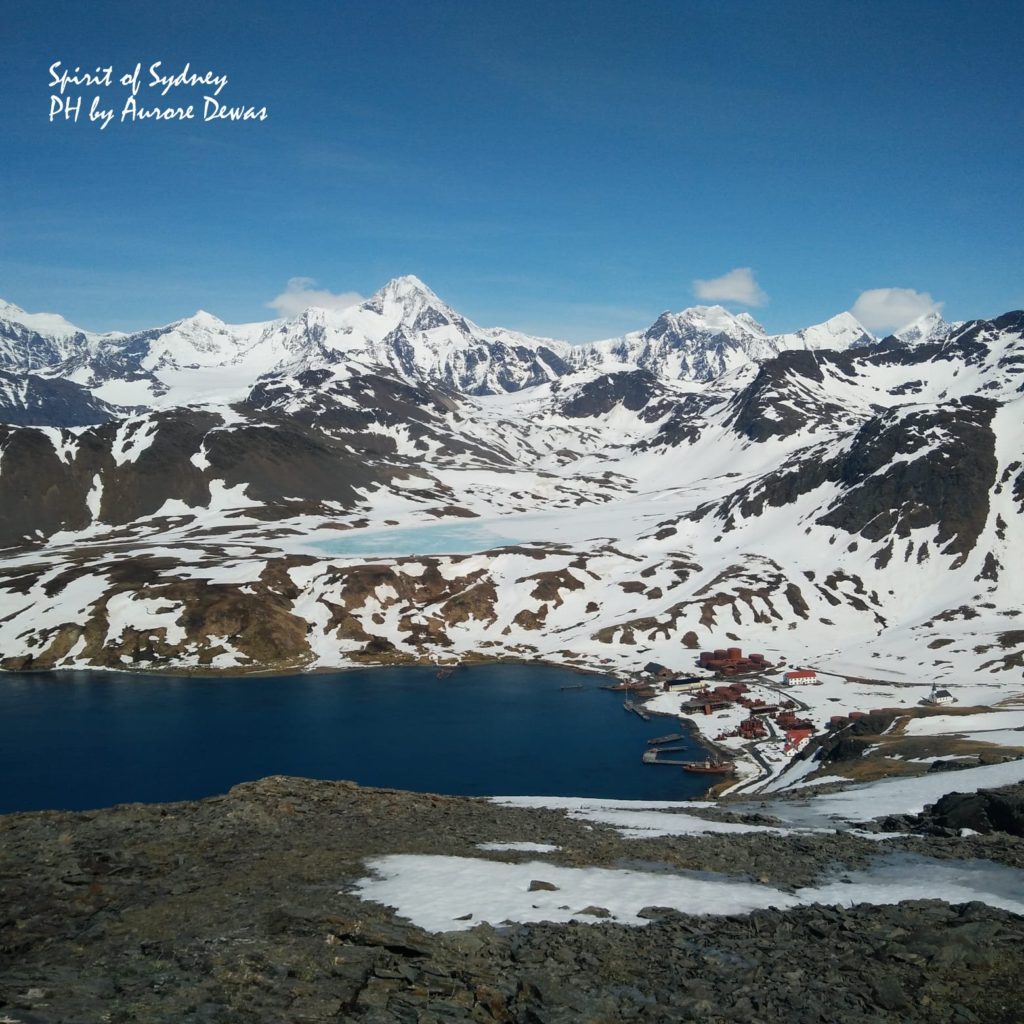
A long long long time ago, well, just a bit more than a century ago actually. South Georgia was the kingdom of whales. Humpback whales, sperm whales, fin and blue whales. unfortunately, the story doesn’t end with a “they lived happily ever after”. They were almost wiped off the face of the earth, their population drastically dropping as they were fished for their oil and meat. Only here in South Georgia 175 000 whales were killed over 65 years, roughly from early 20th century to the 60’s, and the number are still far from recovering.
That’s part of what we’ve also come to learn and see here in South Georgia. This strange part of our human history. Reading, learning, visiting, when allowed, the old retired whaling stations. Reminiscence of a forgotten and butchery past. They are intriguing reminders of a harsh and different life, of what people can do and endure for profit.
To set the scene, we’re here, in an amazing place; South Georgia. It’s probably one of the most remote places one can ever visit but it is grandiose with it’s subantarctic wonders: glaciers alongside mountains covered in bright green moss, snow, sun, wind, gale a rich rich fauna and a wild wild wild nature. It has this magical thing that takes your breath away and leave a smile on your face that can’t blow away in the wind. Because even the wind that blows and blows cannot take away the beauty an power of this place.
I love to imagine that once upon a time people lived here in South Georgia, and it was the case in fact. Imagine the bustling life here I this so far away place on Earth, in those whaling towns now abandoned. To see those ghost towns from the shore or from up above is quite stunning. All iron, rusty buildings, immense oil tanks. You can even hear from far or with the wind blowing the metal grunting, it’s last cry, forgotten and out of strength to fight time which will eventually defeat them. Now most of the buildings have collapsed, deformed, torn by the wind, but once upon a whale it must have been something, life brought from the old continent. I am not saying that it was a nice and Husviklife, no, far from that , it was a life of constant slaughter, constant stinky smell, in the cold and the slippery whale grease but what a different life! I am not sure that people at the time came here for the adventure like us, probably not or maybe a tiny part, as I like to think that the heart of men is also driven by the search of adventure and not only for the good pay. So for about 60 years, more depending on the place, 7 whaling stations populated the island, mostly Norwegian people. Sealers were here before, but they didn’t create those entire towns like the whalers did. There was Prince Olaf, Leith, Stromness, where Shackelton actulally finished its long journey, Husvik, Gryviken, Godthul and Ocean Harbour. Amongst those Godthul and Ocean Harbour were almost fully dismantled, Grytviken was partly restored and partly dismantled and there you can really see, learn and understand what life was back then, thanks to the museum and lovely people working there. The 4 other ones are rusty ruins that cannot be visited because of hazard and asbestos.
We’ve had the chance to see them from different points of view, from the sea kayaking and sailing, up above when hiking and more in depth when in Grytviken but that doesn’t keep my imagination from wondering, imagining, drifting on what life must have been there, busy and full time in the austral summer and probably very quiet and freezing cold for the few people who used to stay over the nearly polar winter to take care of the station. Once upon a whale people lived here, a life that no one will ever know and now has started its return to nature…
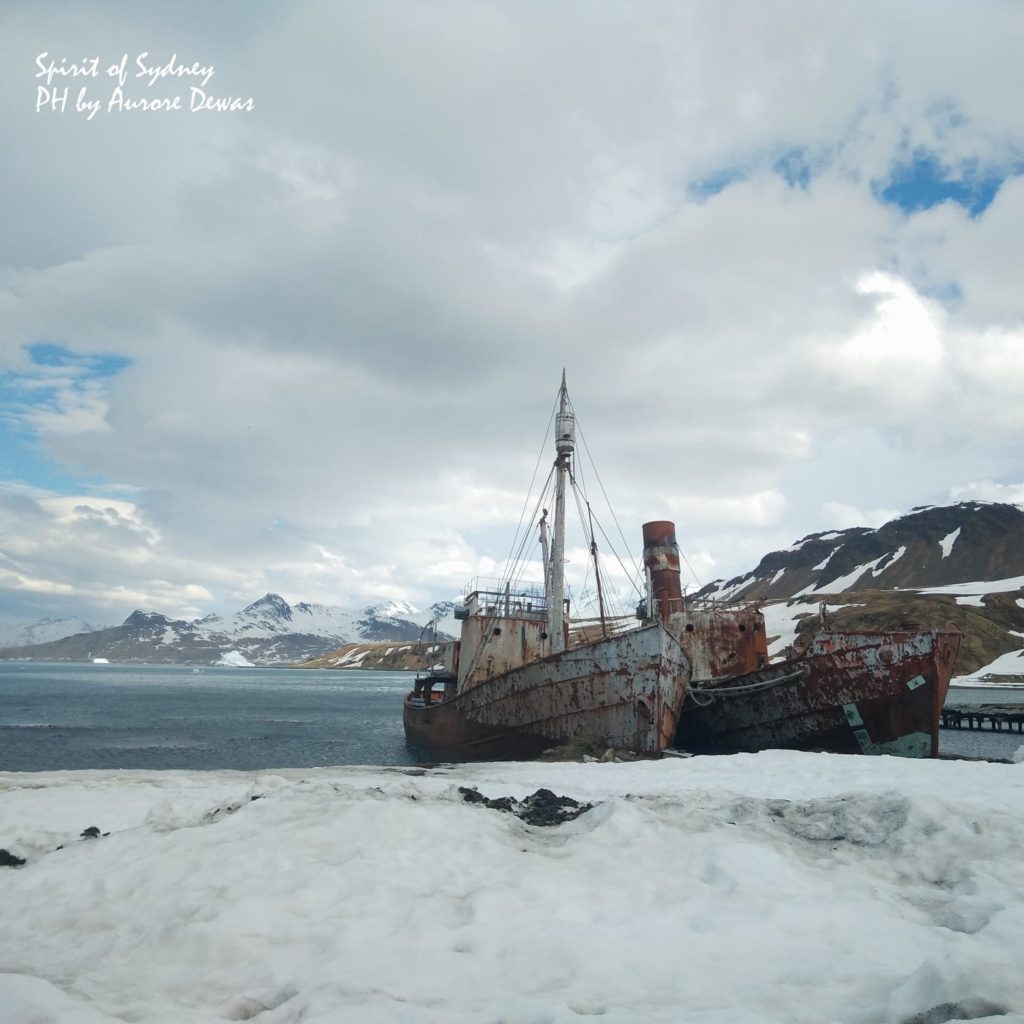
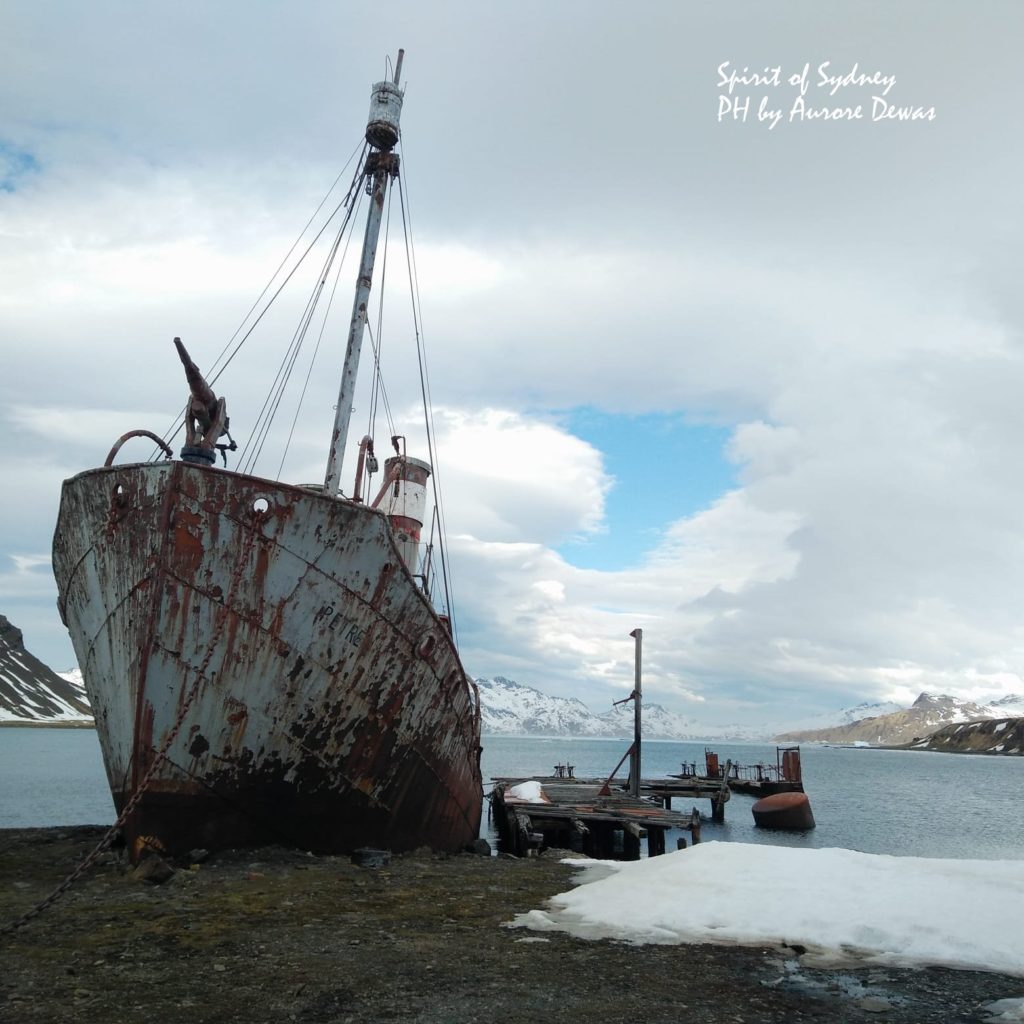
Blog Post by Aurore Dewas

